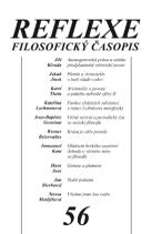A Unity of Two Natures: Hegel and the „Symbolum Chalcedonense“
What interpretation does Hegel give to the core utterance of the Old Church confession, which is, that in Jesus Christ the divine and human nature were united? In answering this question, the study focuses exclusively on the so-called Chalcedonian formula of the confession. The formula itself is analysed in Part I. In Part II I outline the present-day interpretation approaches to it (meta-linguistic, metaphysical, mythical-metaphorical). In Part III I build upon Hegel’s logic in order to reconstruct three possible models for understanding the unity of heterogeneous elements: the mereological, the functional and the holistic model. I employ these various models in resolving the issue of psychophysical unity, and subsequently in elucidating the nature of the hypostatic unity. In Part IV I demonstrate that the model employed by Hegel in interpreting the Chalcedonian formula is the holistic one, and that the phrase „the unity of the divine and human natures“, according to Hegel, is the expression for a complex structure of the Spirit
Backlinks: Reflexe 40
